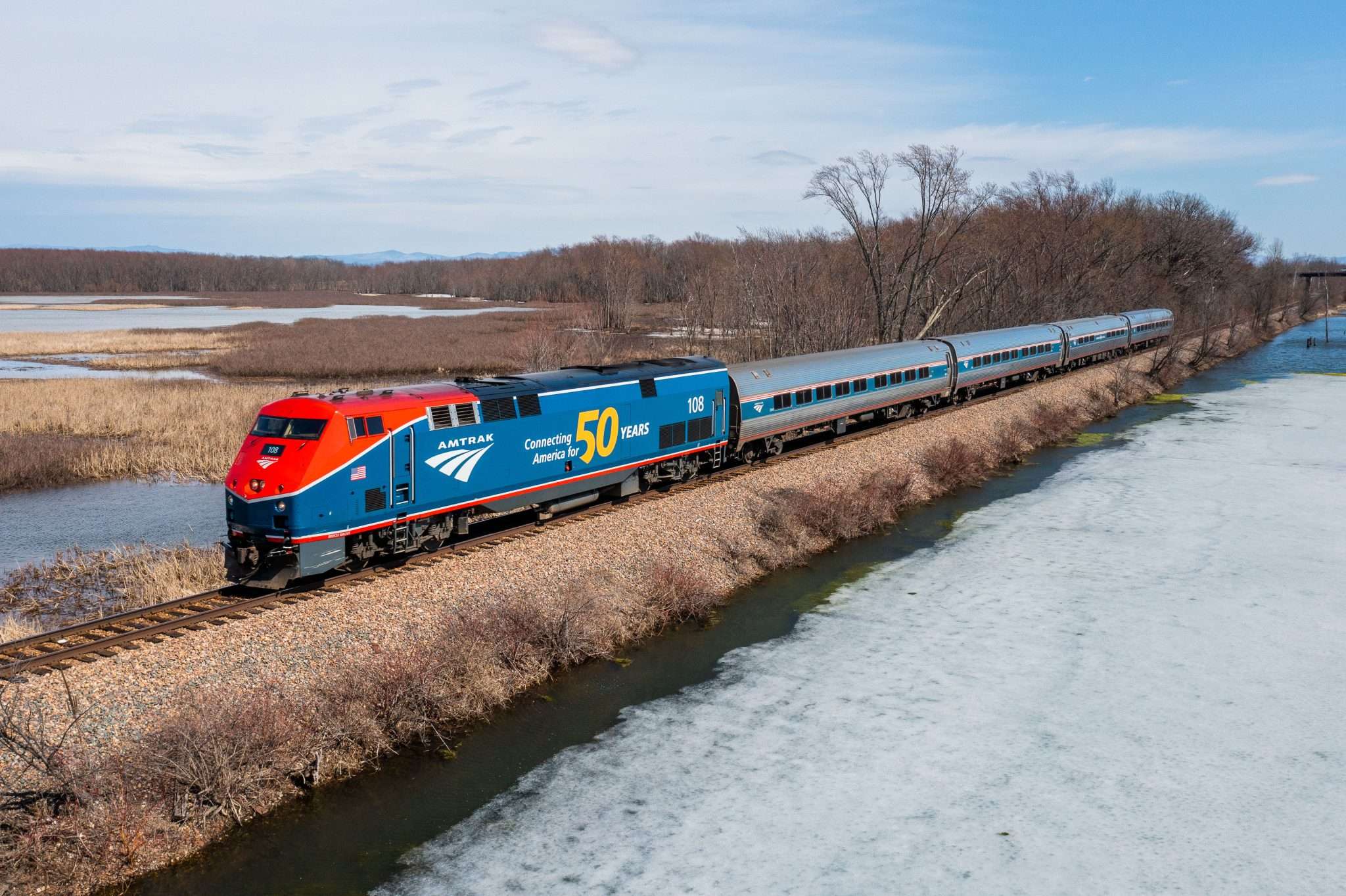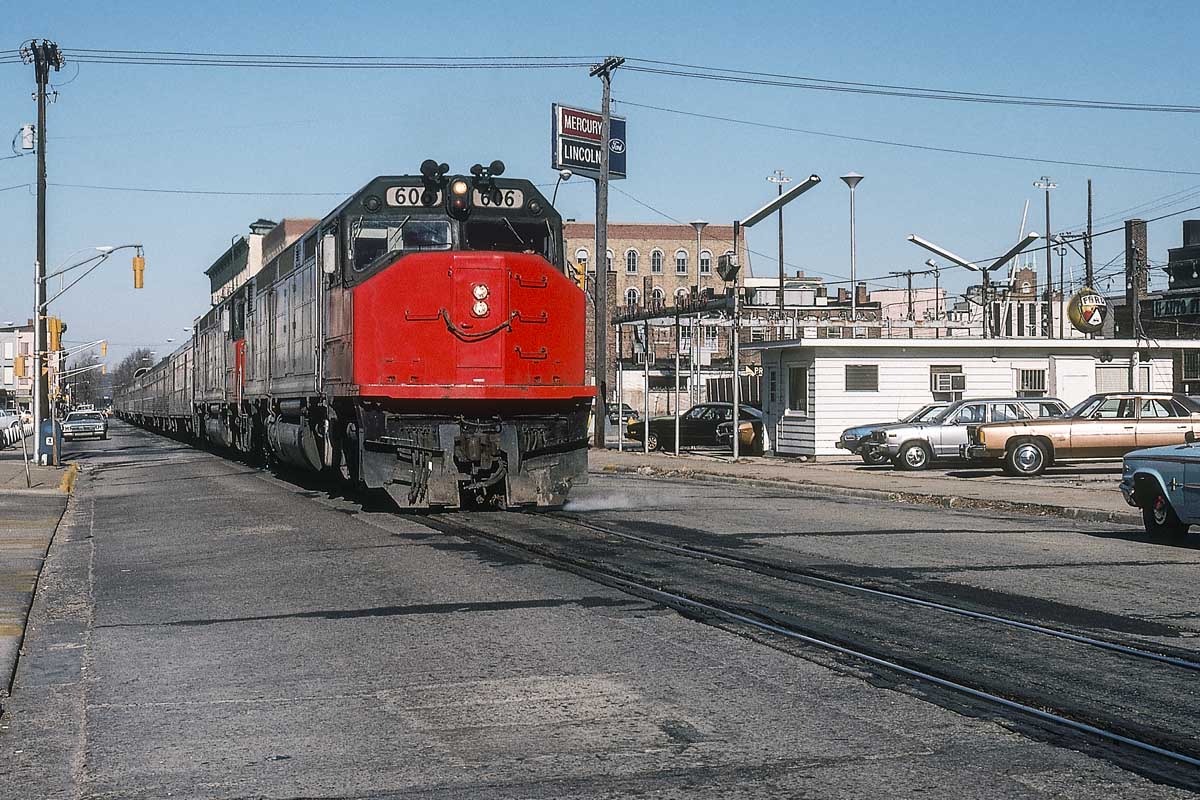A pretty interesting announcement was that the East Broad Top Foundation has purchased a building in Mount Union for the ongoing archiving of historical documents. The EBT has an entire vault of documents spanning 150 years, literally before the Civil War, and they need space to store and process those documents. The ultimate storage of the original source material, once cataloged, will go back into fireproof vaults at the railroad house at Rockhill Furnace/Orbisonia but actually cataloging is too cumbersome to deal with in the existing facilities.
Now, where this gets interesting is that the East Broad Top Foundation does not own the line from just Aughwick all the way to Mount Union. That was sold by Nick Kovalchick, the previous owner of the EBT, to one Larry Salone. Salone had hoped to take over as owner/operator of the EBT after the Kovalchicks wanted out, and the idea was that he would lease and operate the railroad and then purchase the line bit by bit. He bought, in three separate transactions, the old PRR/Conrail spur from the Norfolk Southern mainline to the northern end of the EBT yard, and the EBT Mount Union yard from the Conrail spur tie-in to the US 522 crossing, and then the line from Mount Union to Aughwick. He never got any farther, since his East Broad Top Preservation Association (oddly his association never seemed to include anyone other then him) was unable to fund further purchases of portions of the EBT and also ceased operation of the East Broad Top in 2011. Salone and his EBTPA always seemed to be at odds with the Kovalchick family and the Friends of the East Broad Top (the volunteer group that handled restoration, operations and stabilization of buildings and artifacts), with it being rare that either were ever quoted in the same article.
Now, when the East Broad Top foundation purchased the rest of the EBT from the Kovalchick family, it did not include the Aughwick-Mount Union portion because, again, Kovalchicks no longer owned it. The decision to go southwest to Pogue, Saltillo and Robertsdale was made in part because they didn't own the trackage much farther north of the wye at Colgate Grove Picnic Area in Shirleysburg. When people would ask about going north to Mount Union, the answer was always "Nope, we don't own the track, and there's not much up at the Mount Union yard anymore." So, at first glance, the decision to get a building in Mount Union partially just seems like a case of the building being available and right for the task. But then there's this quote.
"We’re showing that we are committed to being in Mount Union. And this is the first step,” Levin said.
Levin and Esposito said they are bound by a confidentiality agreement and can’t yet talk about the specific details of their plans, but Esposito made clear to the Mount Union planners: “We do have every intent of getting trains to Mount Union at some point.”
Hmmm. Maybe Salone is throwing in the towel at whatever he was trying to do up to Mount Union, maybe he sees an opportunity to make a quick buck by selling his portion to the East Broad Top Foundation, or some theorize that maybe they are working out a deal for trackage rights or a lease with Salone and his EBTPA. Granted, I think it won't be anytime in the immediate future that they go to Mount Union. They're already working hard on going to Saltillo and have that all planned out, plus there is a washout below Aughwick and the issue of the Aughwick concrete bridge. While the washout isn't a huge deal, the concrete bridge looks like it's in absolutely disastrous condition. I'm no bridge engineer but I think it's at the point where it would require replacement. Also, there is no longer a place to turn the locomotives. The wye was cut out and while that's not the end of the world, since the wyes are gone at Robertsdale and Saltillo and will be rebuilt, in Mount Union a McDonalds and Dollar General have been built on the land close to where the wye was.


























































